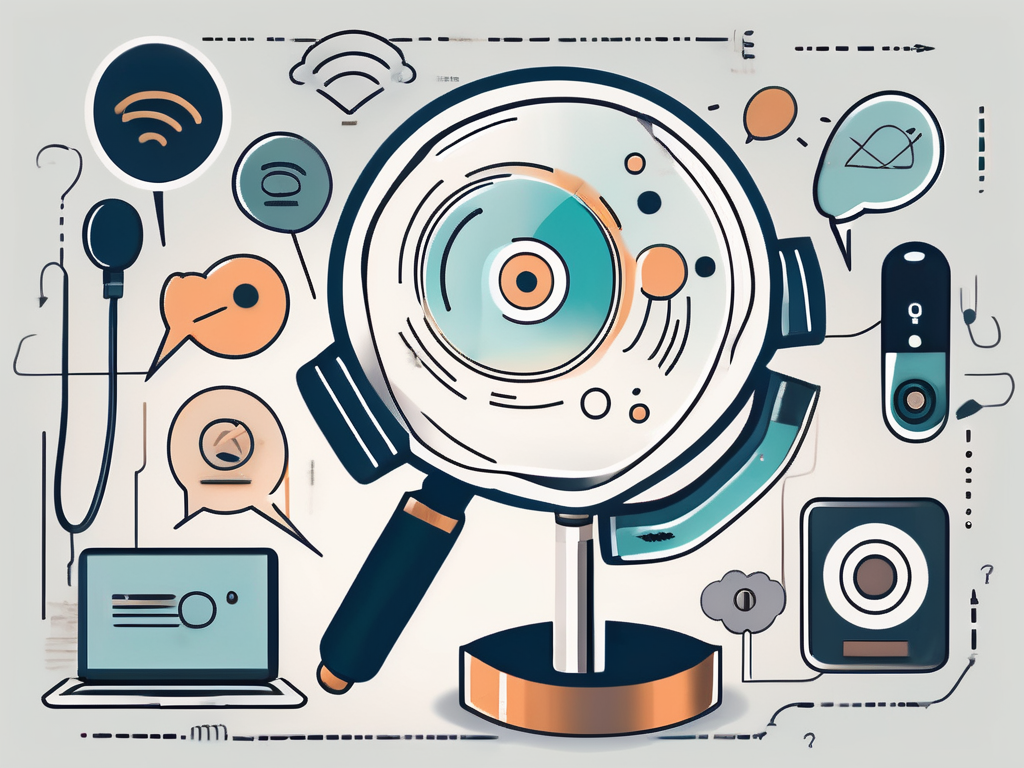In today's fast-paced business world, conducting productive customer development interviews is vital for gathering valuable insights and feedback. These interviews serve as a powerful tool for understanding customer needs, pain points, and preferences, ultimately helping businesses develop products and services that meet customer demands. To conduct effective customer development interviews, it is essential to employ various strategies that promote meaningful and fruitful discussions.
.jpeg)
Effective Strategies for Productive Discussions
When it comes to conducting customer development interviews, fostering productive discussions should be a top priority. To achieve this, it is crucial to create an open and comfortable environment where customers feel encouraged to share their thoughts and ideas. Establishing rapport and actively listening to their responses can go a long way in building trust and uncovering valuable insights.
One way to create an open and comfortable environment is by choosing an appropriate setting for the interview. Selecting a quiet and private location can help customers feel at ease and more willing to open up. Additionally, ensuring that the interview space is well-lit and free from distractions can further enhance the atmosphere for productive discussions.
Body language plays a significant role in establishing rapport with customers. Maintaining eye contact, nodding in agreement, and using open and welcoming gestures can convey genuine interest and encourage customers to share more. It is important to make customers feel heard and valued throughout the interview process.
Another effective strategy is to ask open-ended questions. These types of questions encourage customers to provide detailed responses rather than simple "yes" or "no" answers. By delving deeper into their experiences, preferences, and pain points, businesses can gain a deeper understanding of their customers' needs.
When crafting open-ended questions, it is essential to consider the specific goals of the interview. Tailoring the questions to address the desired insights can lead to more fruitful discussions. For example, if the goal is to understand customer satisfaction with a product, asking questions like "Can you describe a time when the product exceeded your expectations?" or "What improvements would you suggest for the product?" can elicit valuable feedback.
In addition to asking open-ended questions, active listening is crucial for productive discussions. This involves giving full attention to the customer's responses, without interrupting or rushing them. Taking notes during the interview can help in capturing important details and demonstrating a genuine interest in what the customer has to say.
Paraphrasing and summarizing the customer's responses can also show that their input is valued. This not only helps to clarify any misunderstandings but also encourages the customer to elaborate further. Reflecting on their responses and asking follow-up questions can lead to deeper insights and a more comprehensive understanding of their needs and preferences.
Lastly, it is important to maintain a neutral and non-judgmental stance during the interview. Customers should feel comfortable expressing their opinions, even if they differ from the interviewer's expectations. Creating a safe space for diverse perspectives can lead to more honest and valuable discussions.
Maximizing Productivity: One Person at a Time
While conducting customer development interviews, it is crucial to focus on one person at a time. Giving undivided attention to each customer allows for a more personalized and engaging conversation. By maintaining eye contact and actively listening, interviewers can create a sense of importance for each customer, promoting a more fruitful exchange of ideas.
Imagine sitting in a cozy coffee shop, the aroma of freshly brewed coffee wafting through the air. You find yourself across from a customer, their eyes filled with anticipation, ready to share their thoughts and experiences. As the interviewer, you understand the significance of this moment. You know that by devoting your full attention to this individual, you can uncover valuable insights that will shape the future of your product.
With each question you ask, you delve deeper into the customer's world. You listen intently, not just to their words, but also to the subtle nuances in their tone and body language. This level of attentiveness allows you to truly understand their needs, desires, and pain points. It creates a safe space for them to open up and share their honest opinions, knowing that they are being heard and valued.
By focusing on one person at a time, you create a unique connection that goes beyond a mere transactional interaction. You establish a genuine rapport, building trust and fostering a sense of camaraderie. This connection becomes the foundation for a long-lasting relationship with your customers, as they feel seen and understood.
As the conversation progresses, you find yourself captivated by the customer's stories and insights. Their experiences become a source of inspiration, fueling your creativity and igniting new ideas. You realize that by giving your undivided attention, you are not only benefiting the customer but also enriching your own understanding of the market and its potential.
Moreover, focusing on one person at a time allows you to fully explore the depth and breadth of their perspectives. Each customer brings a unique set of experiences and viewpoints to the table. By immersing yourself in their world, you gain a comprehensive understanding of the diverse needs and preferences within your target audience.
It is worth noting that this approach requires discipline and patience. In a fast-paced world where multitasking has become the norm, it can be tempting to divide your attention among multiple customers. However, by resisting this urge and committing to a one-on-one approach, you unlock a wealth of insights that would otherwise remain hidden.
Setting Goals and Preparing Questions in Advance
.jpeg)
Before initiating any customer development interview, it is essential to set clear goals and objectives. Define what you hope to achieve from the interview, whether it's understanding customer pain points, gathering feedback on existing products, or exploring potential opportunities.
To ensure a smooth flow of the conversation, prepare relevant questions in advance. These questions should align with your goals and help guide the discussion. By having a well-thought-out plan, you can make the most of your time with the customer and ensure that all important topics are covered.
Distinguishing Behavior from Feedback in Conversations
During customer development interviews, it is important to distinguish between customer behavior and feedback. While observing customer behavior provides valuable insights, it is equally important to listen to their candid feedback. Customers may not always express their needs explicitly, but by carefully analyzing their feedback, businesses can uncover hidden pain points and opportunities for improvement.
Embracing Constructive Criticism with Enthusiasm
Constructive criticism is a valuable gift that should be embraced with enthusiasm during customer development interviews. Instead of dismissing negative feedback, view it as an opportunity for growth and improvement. By maintaining a positive mindset and openly accepting feedback, businesses can build stronger relationships with customers and demonstrate a commitment to continuous improvement.
Breaking Free from the Constraints of Politeness
Politeness has its place in social interactions, but in customer development interviews, it is crucial to break free from the constraints of excessive politeness. Encourage customers to express their honest opinions and emotions, even if they differ from your initial assumptions.
By creating an environment that welcomes candid feedback, businesses can gain deeper insights into customer preferences and pain points that may not have otherwise been revealed.
Unlocking Insights with Open-Ended Questions

Open-ended questions are invaluable when it comes to unlocking meaningful insights during customer development interviews. These types of questions encourage customers to provide detailed responses and share their experiences, allowing businesses to gain a deeper understanding of their needs.
For example, instead of asking, "Do you like our product?" a more effective open-ended question would be, "What specific features of our product do you find most valuable, and why?" This type of question prompts customers to explain their preferences and helps businesses identify areas for improvement or further development.
Focusing on Tangible Actions, Not Abstract Feelings
During customer development interviews, it is crucial to focus on tangible actions and behaviors rather than abstract feelings. While understanding customers' emotions is important, tangible actions provide more concrete insights that can be acted upon.
For instance, instead of asking, "How do you feel about our customer service?" a better question would be, "Can you provide an example of a positive experience you had with our customer service team?" By focusing on specific instances, businesses can identify areas of excellence and areas that need improvement.
The Power of Active Listening
Active listening is a skill that should be honed when conducting customer development interviews. Rather than simply waiting for your turn to speak, actively engage with the customer's responses by asking follow-up questions, clarifying statements, and summarizing key points.
By demonstrating active listening, interviewers can make customers feel valued and encourage them to share more detailed insights. Additionally, active listening allows interviewers to fully grasp the customer's perspective and ensure accurate interpretation of their responses.
Digging Deeper: Following Your Instincts
While it is important to adhere to a structured interview guide, it is equally crucial to follow your instincts and dig deeper when necessary. If a customer's response hints at an underlying issue or opportunity, don't hesitate to explore it further.
By delving deeper into customers' experiences and emotions, businesses can uncover valuable insights that may have a significant impact on product development and customer satisfaction.
Confirming Understanding through Paraphrasing
During customer development interviews, it is essential to confirm understanding by paraphrasing. Paraphrasing involves summarizing or restating what the customer has expressed to ensure that both parties are on the same page.
Paraphrasing not only demonstrates active listening but also provides an opportunity for customers to clarify their thoughts or add more information. This confirmation process helps eliminate misunderstandings and ensures accurate interpretation of the insights gathered.
Leveraging Introductions for Enhanced Communication
Proper introductions can significantly enhance communication during customer development interviews. Clearly introduce yourself and your role before diving into the interview. This establishes a professional and transparent atmosphere, allowing customers to understand who they are speaking with and why their insights are important.
Introductions also provide an opportunity to set the stage for the interview by explaining its purpose, duration, and expected outcomes. This clarity helps customers feel more comfortable and confident in sharing their thoughts and opinions.
Capturing Meeting Notes in a Timely Manner
During customer development interviews, it is crucial to capture meeting notes in a timely manner. Taking thorough and accurate notes allows for easy reference and helps keep important information organized.
After each interview, take the time to review and summarize the key points discussed. This summary will serve as a valuable resource when analyzing trends and identifying common themes across multiple interviews.
Analyzing Patterns and Applying Critical Thinking
.jpeg)
Once you have completed multiple customer development interviews, it is time to analyze patterns and apply critical thinking. Look for common themes, recurring pain points, and emerging opportunities.
By applying critical thinking to the insights gathered, businesses can make informed decisions and develop actionable strategies to address customer needs and improve products or services.
Where to go from here?
Conducting productive customer development interviews requires a combination of active listening, open-ended questions, and a willingness to embrace constructive criticism. By employing these effective strategies, businesses can gather valuable insights, enhance customer relationships, and drive product innovation.
In your journey of discovering insights you may come across moments where expert guidance is needed. If you’d like to learn about our services and how we can help book a free consult here.
Enjoyed the article? Join the ranks of elite C Execs who are already benefiting from LeadReads. Joins here.






